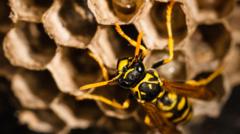Harvard University has made a landmark decision to transfer a collection of daguerreotypes, among the earliest photographs of enslaved individuals in the U.S., to the International African American Museum in South Carolina. This agreement caps a 15-year legal battle initiated by Tamara Lanier, a Connecticut author, advocating for the repatriation of the images to honor her ancestry.
The daguerreotypes, captured in 1850, showcase figures identified as Alfred, Delia, Drana, Fassena, Jack, Jem, and Renty. These images were discovered in the storerooms of Harvard's Peabody Museum of Archaeology and Ethnology in 1976 and were previously commissioned by Harvard zoologist Louis Agassiz, who aimed to substantiate the debunked idea of racial superiority via polygenism.
Despite the university's expressed desire to transfer the photos to a suitable institution, an undertone of complexity remains, primarily regarding Lanier's claim of descent from the individuals portrayed. Although a 2022 ruling by the Massachusetts Supreme Judicial Court dismissed her ownership claims for the daguerreotypes, it recognized the distress linked to their creation, asserting Harvard's historical complicity in the oppressive context these images represent.
Lanier, elated by the recent agreement, remarked on the emotional significance of relocating the photos to South Carolina, linking the images to the region's historical narratives of slavery in the United States. The museum's president, Tonya Matthews, echoed this sentiment, emphasizing their commitment to presenting the images with truth and empathy, educating visitors on the painful legacy of slavery and its ongoing implications.
In a broader context, this settlement resonates with ongoing national dialogues regarding how educational institutions address historical injustices linked to slavery, as evidenced by Harvard's prior alterations to its branding to reflect its complex past.
The daguerreotypes, captured in 1850, showcase figures identified as Alfred, Delia, Drana, Fassena, Jack, Jem, and Renty. These images were discovered in the storerooms of Harvard's Peabody Museum of Archaeology and Ethnology in 1976 and were previously commissioned by Harvard zoologist Louis Agassiz, who aimed to substantiate the debunked idea of racial superiority via polygenism.
Despite the university's expressed desire to transfer the photos to a suitable institution, an undertone of complexity remains, primarily regarding Lanier's claim of descent from the individuals portrayed. Although a 2022 ruling by the Massachusetts Supreme Judicial Court dismissed her ownership claims for the daguerreotypes, it recognized the distress linked to their creation, asserting Harvard's historical complicity in the oppressive context these images represent.
Lanier, elated by the recent agreement, remarked on the emotional significance of relocating the photos to South Carolina, linking the images to the region's historical narratives of slavery in the United States. The museum's president, Tonya Matthews, echoed this sentiment, emphasizing their commitment to presenting the images with truth and empathy, educating visitors on the painful legacy of slavery and its ongoing implications.
In a broader context, this settlement resonates with ongoing national dialogues regarding how educational institutions address historical injustices linked to slavery, as evidenced by Harvard's prior alterations to its branding to reflect its complex past.




















